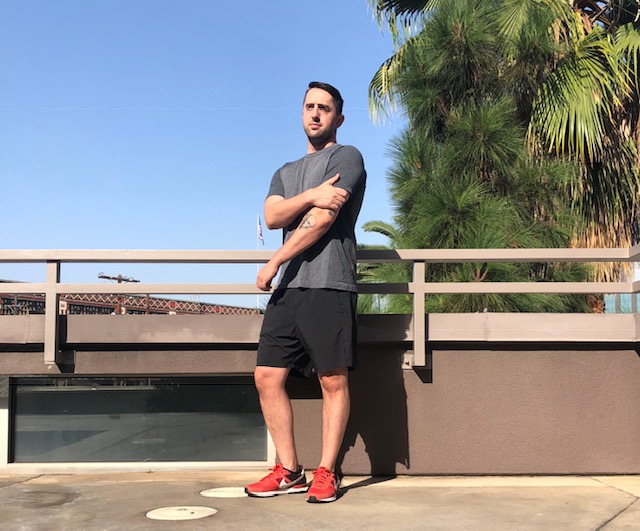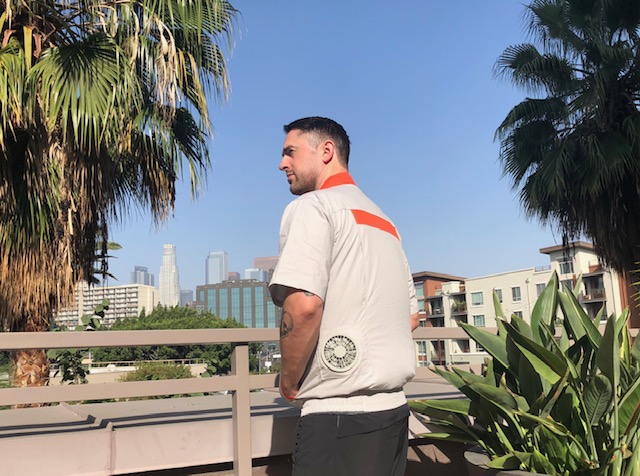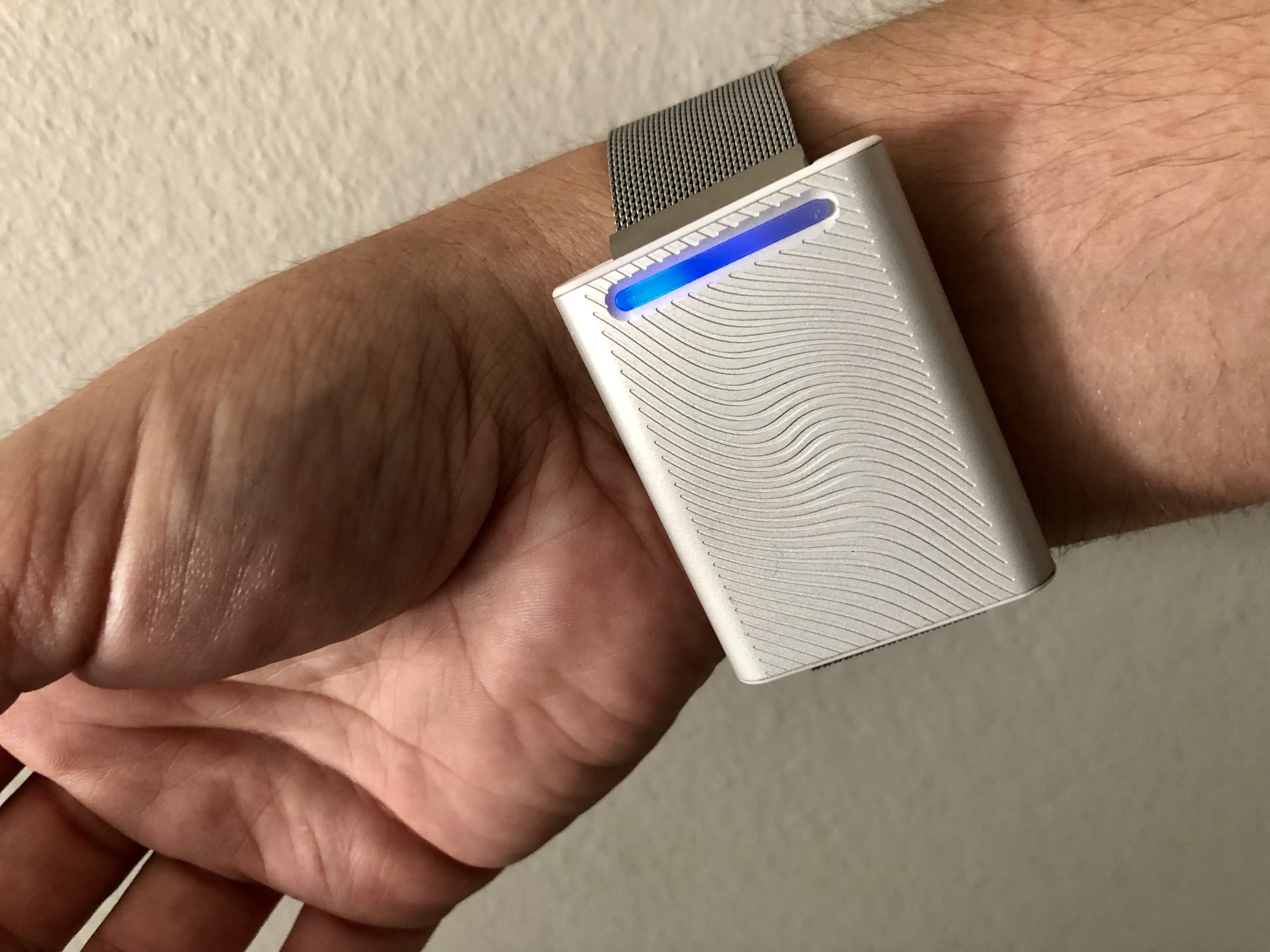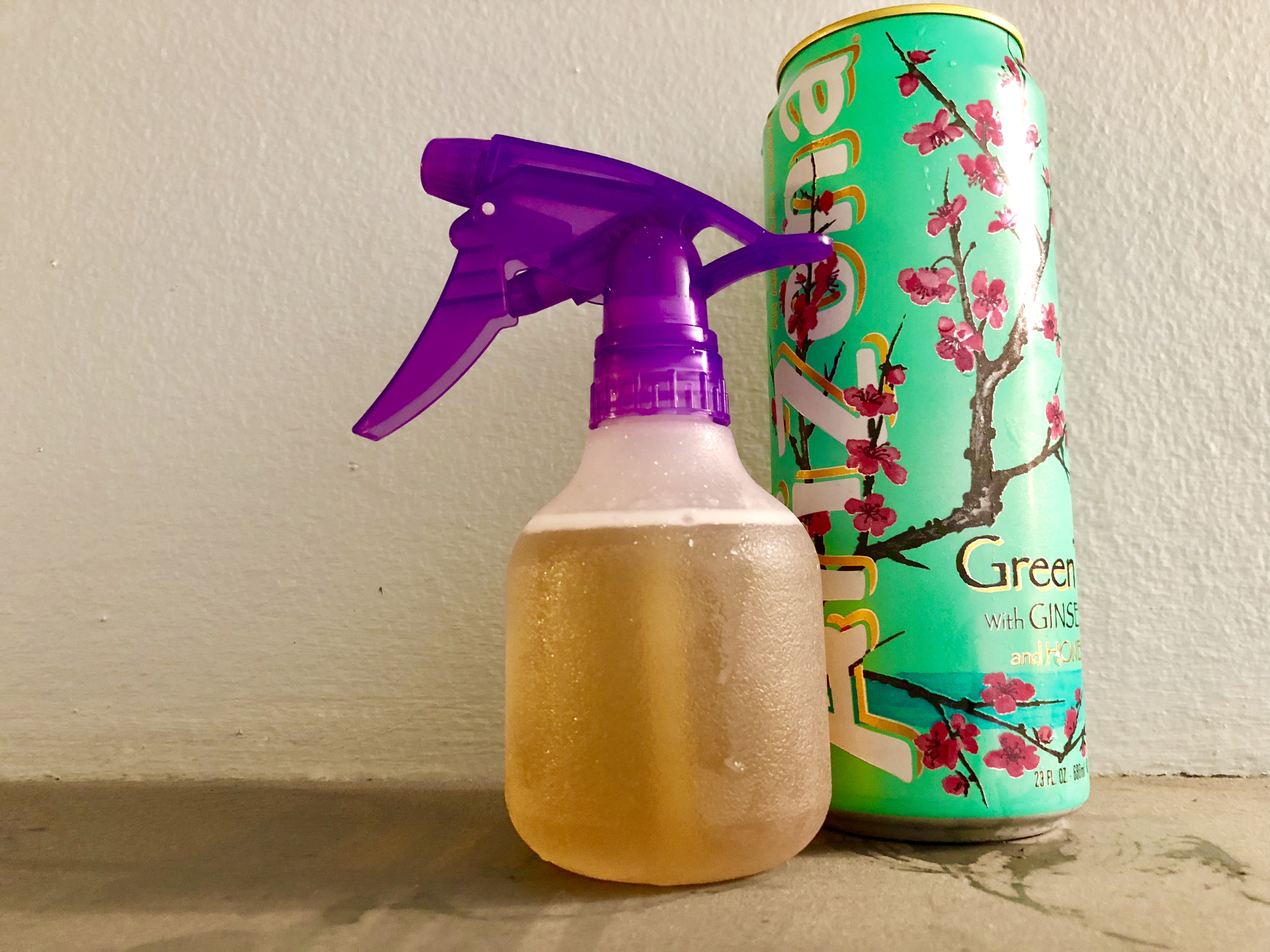
I Tested Out the Ridiculous Fashion Climate Change Will Force on Us
September 20, 2018Summer may be coming to its “official” end, but as the world gets hotter, excruciating heat will likely soon be with us year-round. In desert cities like Phoenix, citizens are already accustomed to flitting in and out of habitable air-conditioned bubbles to avoid melting in the 120-degree-plus desert heat, but extreme temperatures are becoming more and more common worldwide. With cities like Denver hitting heat records of their own and the arctic circle literally on fire, it seems there will eventually be nowhere left to run to avoid the fiery calamity we’ve brought upon ourselves.
Fortunately, for all our faults, mankind’s adaptivity remains one of our greatest attributes. If there’s no way to unfuck this climate situation, we’ll undoubtedly find ways to carry on in spite of it. While the greatest minds on the planet toil away fighting climate change and mitigating its worst effects, ordinary people will have more mundane concerns. That brings me to my latest project: How do you stay cool when the world around you is getting incredibly hot?
On a particularly toasty weekend in LA, I tested out a variety of heat-beating techniques and products. Whether traditional, novel, simple, high-tech, free, or prohibitively expensive, I pseudo-scientifically analyzed how they’d fare at keeping things chill once we’re all living in a Mad Max dystopia.
Fabrics
The old-fashioned way to fight the heat is with common airy fabrics like cotton, linen, and chambray. I suited up in some linen pants and a cotton T-shirt and stood under the midday sun, but as these fabrics were already part of my daily wardrobe rotation, it was hard to gauge their efficacy, so I decided to use the getup as my control outfit, taking note of what would be my baseline comfort level, before changing into something a bit more engineered.
I next stepped out in a nylon/spandex/polyester blend athletic wear outfit from Ryu Apparel comprised of compression shorts and a technical tee with swatches of complicated-looking knitting in areas that would be feeling the full force of my sweat glands. This is the sort of outfit you can imagine people wearing in the future—at least the ones who can afford it. The MSRP for my Ryu fit was a fairly steep $137 so I can't see it beating out the classic fabrics for the impoverished majority of the world's population. Mike Eardley, a senior designer at the company, had previously explained to me over the phone how the company’s looking beyond the current athleisure trend and designing for a future where people expect the hydrophobic, sweat-wicking, and cooling technology of workout gear built into all their clothes.

“People expect [these features] in their day-to-day garments now,” said Eardley. “It’s no longer reserved for just a high-performance running shirt. Now it’s in your everyday tee or dress shirt. The rise in heat is no joke and it’s not fiction. We’re definitely aware of it, our customers are aware of it, and we’re developing products for that.”
He also got into some of the science about how the seamless, lightweight fabrics were specifically designed to regulate body temperature and wick moisture away from the body and to the outside of the fabric. The fabric has been treated with Polygiene, a patented third-party finish, and a silver salt antimicrobial wash during the production process, so my wicked sweat was more likely to drop away without dampening or stinking up my outfit. Not that you notice all of that science, but I have to admit I somehow felt cooler in black spandex than the white cotton from before.
Fan Shirts
Not every clothier prepping for the stifling future is focused on materials. Some, like Taiwanese company Octocool, have gone a more cyberpunk mashup route, rigging their $300 jackets with AC units in the form of two lithium battery-powered fans placed by the kidneys.

As I slipped on the beige and bright-orange zip-up short-sleeve jacket they’d sent me to test out, I found myself thinking that the mid-90s London rave aesthetic was surprisingly fresh and then worrying if my fashion barometer was completely out of whack for thinking so. But when the fans kicked in and my shirt inflated like one of those sumo costumes, I realized just how perfect for a sweaty underground rave this thing would actually be. The steady flow of air felt downright decadent and I pitied all the passersby who weren’t basking in the breezy experience with me.
Eventually, the novelty of blowing (hot) air onto my sides wore off and I began to notice the chinks in my aircon armor. First, there was the loud whir of the fans that required a bit of a shout to converse over. Then there was the vanity aspect: As cool as the jacket looked, its puffed-out operational state wasn’t exactly complimenting my figure. Sorry, but earth’s climate crisis is going to have to get a little worse before I’m willing to debase myself in something unflattering.
Bare Belly
Taking a cue from Octocool’s HQ, I next explored a DIY approach to cooling off that’s all the rage in and around China. The maneuver, colloquially known as the “Beijing Bikini” due to its prominence in that city, simply involves rolling up one’s shirt to just under the nipples, leaving the stomach exposed to the air.
As mentioned above, I am vain, so you will not see a pic of me recreating this look and baring my gut to a park full of strangers. It felt good, but I had as hard a time keeping my lifted shirt pinned beneath my armpits as I did stomaching the awkwardness of the stares I was now receiving. Perhaps with China taking the throne as the world’s premiere superpower, the cultural differences that prevented me from thoroughly enjoying this cool-off method will soon no longer be an issue.
Sun Umbrella
Also bigger in Asia than America is the practice of carrying an umbrella for protection from the sun. Though the parasol practice goes back millennia, their present-day counterparts utilize 21st-century technology. Bamboo and paper have been replaced with lightweight, near-indestructible metals and fabrics specially treated to block cancerous UV rays along with the heat. Some modern sun umbrellas are so high tech that they robotically track and follow the sun on its path across the sky, keeping pool dozers permanently shaded.
My glossy black UV-blocking umbrella was on the cheaper, analog side of the spectrum. Despite the lack of bells and whistles, it did its job admirably and kept me un-schvitzy and unburnt while the sun beat down. Of everything I’d tested thus far, this device had the highest likelihood of being used again, even if it did make me look like a sickly goth in the process.

AC Watch
Whether using a freezable gel wristband or slipping an ice cube under a normal elastic wristband, cooling one’s internal temperature via the wrist’s major arteries is a tried and true strategy for athletes familiar with the hazards of running in the sun. One company, Embr Wave, has dragged this concept through the Silicon Valley start-up machine and produced a bracelet that purports to offer those same cooling effects electronically for the chill price of $299.
I put on the charged wearable and mashed the left-hand side of its long monobutton until it glowed dark blue and began to send pulses of cold through the porcelain bottom of the device onto my wrist. The effect was neat, but I couldn’t tell if my Embr Wave was legitimately cooling my bloodstream or if I was simply experiencing some sort of tactile illusion parlor trick.
A bigger issue was that the topside of the thing was emanating heat like a space heater and I was starting to worry that it might be negating the cooling effects, if not about to blow up like a Galaxy Note 7. Fortunately, my fears were unfounded and my wrist remained unharmed, but right as I thought I was starting to feel it working, the device turned itself off, apparently deciding that I’d had enough and it needed some time off the clock. I’ll tell you when I’ve had enough, Embr Wave!
Once the device deigned to be operated again, I put my wrist through a couple more cycles to see if I could pin down an assessment, but the results were inconclusive every time. I certainly felt cooler while it ran, but I could never say for sure if I truly was. Oh, well. Even if it is a placebo, it’s certainly a fun, snazzy one that I’ll have no issue taking again.

Tea Spray
My final trial involved a bizarre tactic I’d seen floating around a lot of GOOP-lite mommy blogs. Someone somewhere once decided to put peppermint tea in a spray bottle and squirt themselves with it to cool down and people have been circulating this absurd “tip” ever since. While I didn’t have peppermint tea on hand, I did have peppermint oil and a can of Arizona green tea, so I combined those in the water spray bottle I use to keep my cat from clawing furniture and went once more into the sunlight. Like I said before, we humans are great at improvising and adapting our way out of sticky situations.
In this case, unfortunately, I had improvised my way into a much stickier situation. The homemade spray was initially refreshing, but that lasted for all of one second before the discomfort of having corn syrup residue all over my face eclipsed it. Soon flies were buzzing around me, so I figured it was best to call it a day and go shower off before yellowjackets or worse came to dine on my sweet, sweaty skin. There's good news, though: In our extremely hot future, maybe the all the bees will be dead.
Follow Justin Caffier on Twitter.


